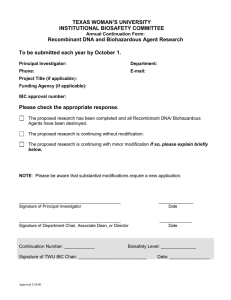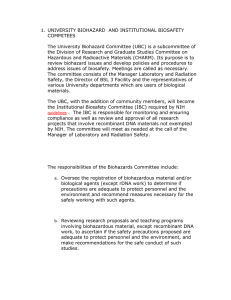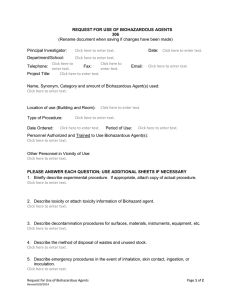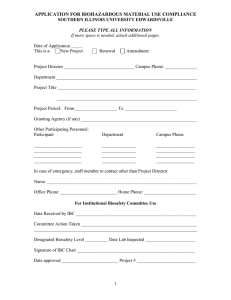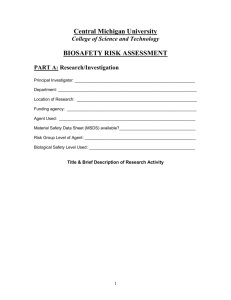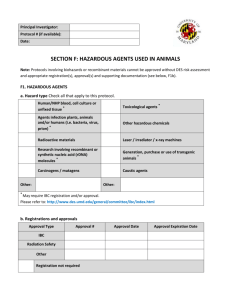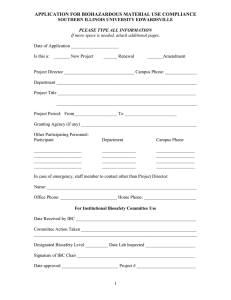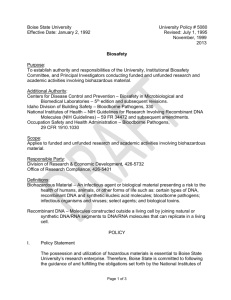Chapter 24
advertisement
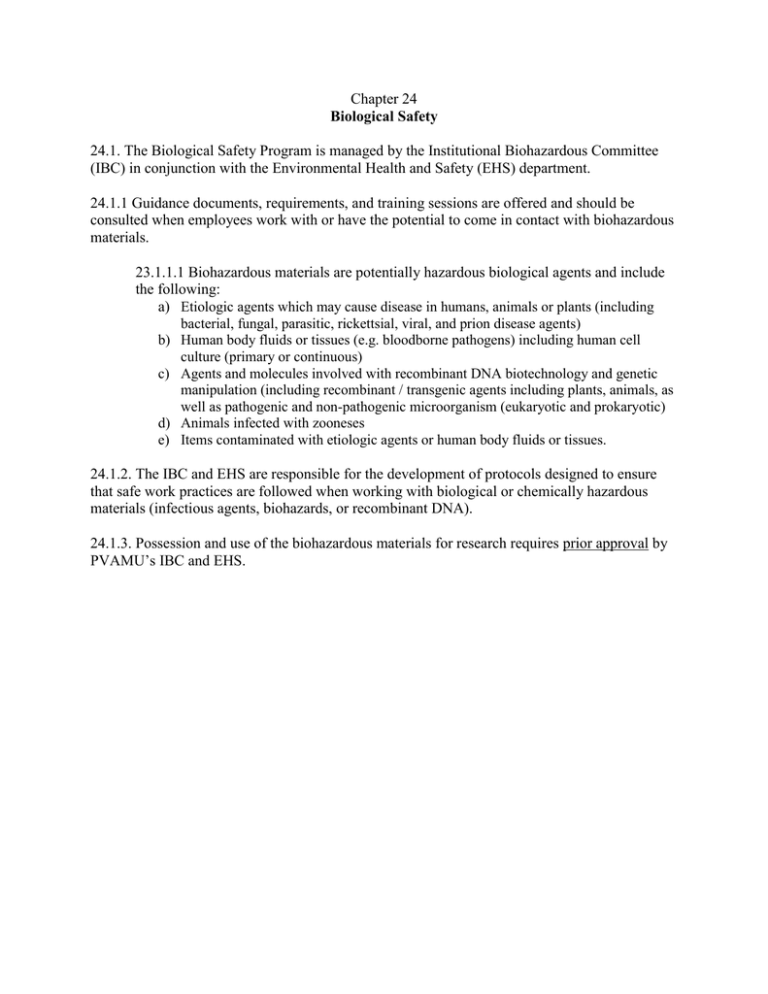
Chapter 24 Biological Safety 24.1. The Biological Safety Program is managed by the Institutional Biohazardous Committee (IBC) in conjunction with the Environmental Health and Safety (EHS) department. 24.1.1 Guidance documents, requirements, and training sessions are offered and should be consulted when employees work with or have the potential to come in contact with biohazardous materials. 23.1.1.1 Biohazardous materials are potentially hazardous biological agents and include the following: a) Etiologic agents which may cause disease in humans, animals or plants (including bacterial, fungal, parasitic, rickettsial, viral, and prion disease agents) b) Human body fluids or tissues (e.g. bloodborne pathogens) including human cell culture (primary or continuous) c) Agents and molecules involved with recombinant DNA biotechnology and genetic manipulation (including recombinant / transgenic agents including plants, animals, as well as pathogenic and non-pathogenic microorganism (eukaryotic and prokaryotic) d) Animals infected with zooneses e) Items contaminated with etiologic agents or human body fluids or tissues. 24.1.2. The IBC and EHS are responsible for the development of protocols designed to ensure that safe work practices are followed when working with biological or chemically hazardous materials (infectious agents, biohazards, or recombinant DNA). 24.1.3. Possession and use of the biohazardous materials for research requires prior approval by PVAMU’s IBC and EHS.
